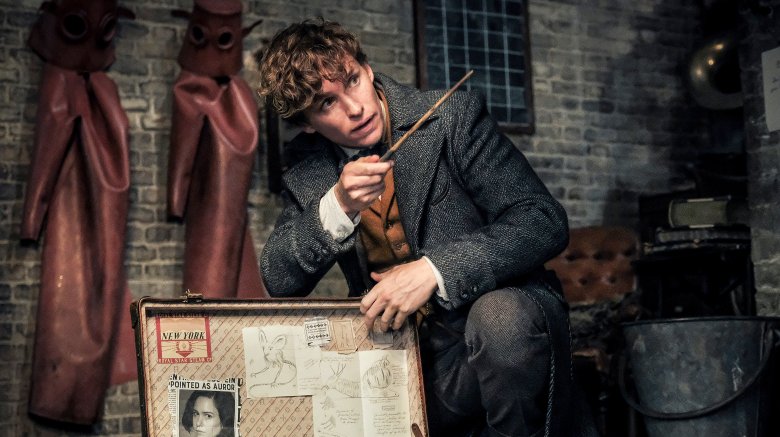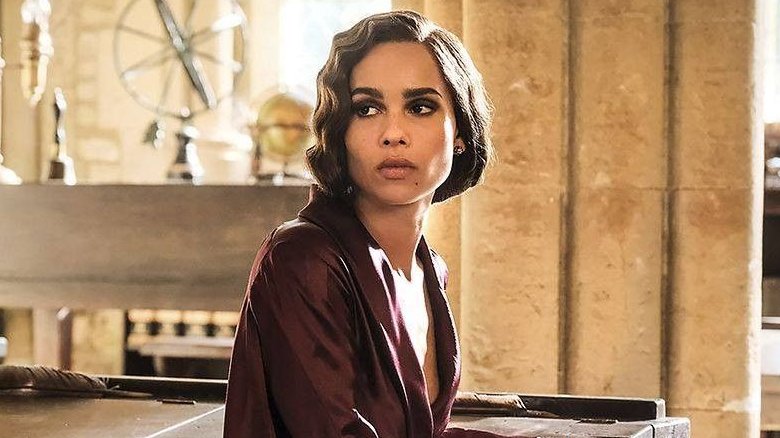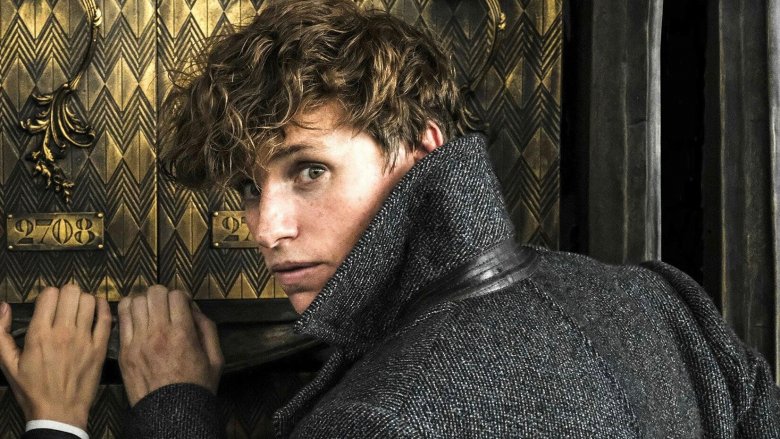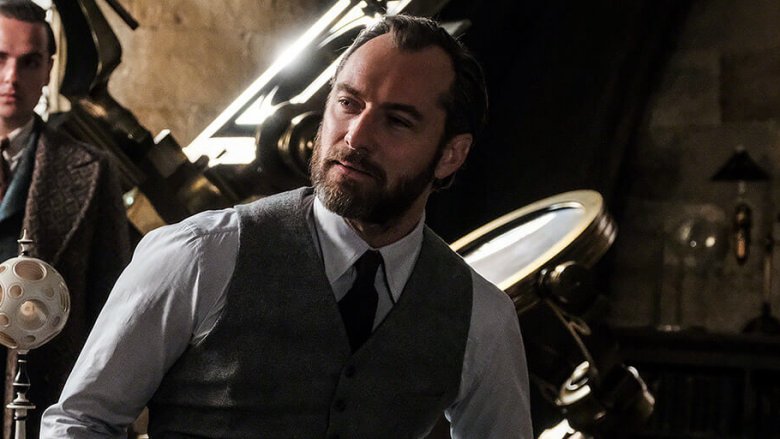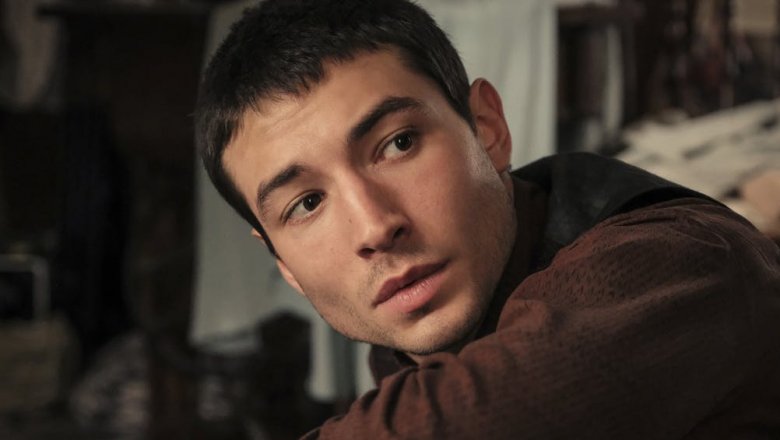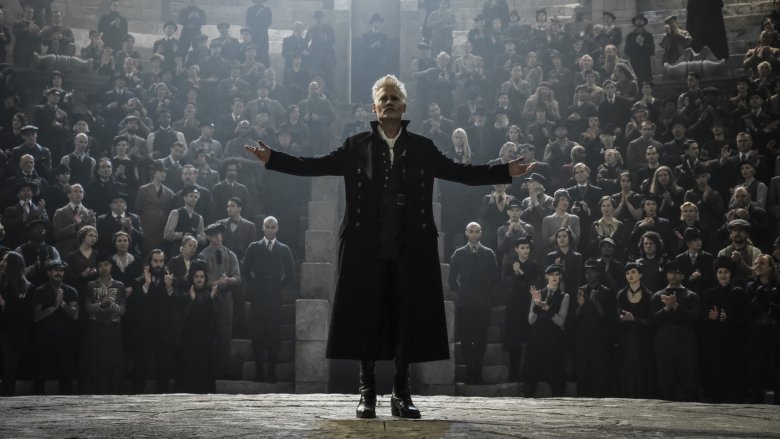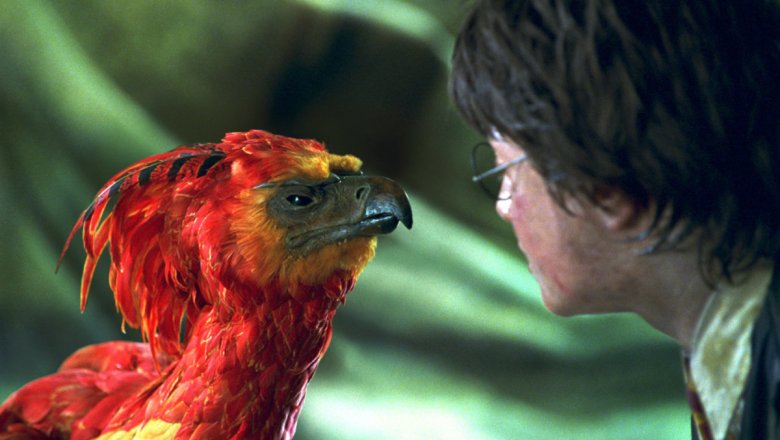The Ending Of Fantastic Beasts: The Crimes Of Grindelwald Explained
Fantastic Beasts: The Crimes of Grindelwald takes us back to 1927, as Gellert Grindelwald (Johnny Depp) escapes the clutches of the Magical Congress of the United States of America and begins his attempt to institute wizarding world domination by trying to recruit Credence Barebone (Ezra Miller), whom he believes is the only person capable of defeating his biggest threat, Albus Dumbledore (Jude Law).
Meanwhile, Newt Scamander (Eddie Redmayne) is totally content to play around with his sprawling home zoo of mythical creatures until he finds out that his love interest Tina (Katherine Waterston) is back in Europe, so he sets off on his own journey to find her and winds up right in the thick of Grindelwald's mess. So how do all these moving parts come together in the latest Harry Potter prequel? Let's take a look at what happened at the tail end of The Crimes of Grindelwald.
The LeStrange legacy
The Crimes of Grindelwald finally introduces us to Leta LeStrange (Zoe Kravitz), Newt's old friend from Hogwarts who's now engaged to his brother, Theseus (Callum Turner). Her family's history becomes a hot topic of interest for Tina and Newt once they realize that Credence might be her little brother, who'd been thought dead. After, they're all coerced into visiting the LeStrange family tomb — a trick play meant to get Credence to the French Ministry so he can hear Grindelwald.
Leta reveals that her real brother Corvus was killed in the Titanic sinking after she swapped the baby out for a less colicky boy. That boy was Credence, and he was given up for adoption after it was revealed that he didn't belong to the LeStranges. She does, however, have another living brother she didn't know about; Yusuf Kama's mother also gave birth to Leta before being taken away by Leta's father. Yusuf is on a mission to kill Corvus, so Mr. LeStrange would suffer the loss of someone he really loves. Alas, it already happened. Or so we're told.
It appears that when Leta sacrifices herself to allow all her new friends to escape Grindelwald's hall of blue flames, she may be the last of the LeStrange's pure blood lineage. Of course, Harry Potter fans will know better than that, since Bellatrix LeStrange (who married into the family by wedding Rodolphus) is such a big part of the Boy Wizard's journey. We'll have to wait to see whether and how this loose thread ties up in later installments, if the LeStrange family's fate gets more of a mention in the future films.
Taking a side
Another subplot of the film concerns Newt Scamander's reluctance to get involved in the Aurors' effort to capture or eliminate Grindelwald. He's asked by the British Ministry of Magic to join forces with them in exchange for the restoration of his international travel rights, but he refuses the offer, citing his disinterest in choosing sides in whatever battle they're a part of — even if his own brother is lifting his wand to join the fight.
Once he and Tina bear witness to what Grindelwald wants to do and is capable of doing, however, he realizes that this is a fight in which no one can remain neutral. After the loss of Leta, and Queenie (Alison Sudol)'s inexplicable decision to align with Grindelwald, Newt tells Theseus that he is now ready to choose and fight for the side of the Ministry against this encroaching threat. It's a touching moment, and an important one as well, as it's his creature that manages to steal the blood pact vial from Grindelwald in one of his many moments of self-aggrandizement.
Indeed, Harry Potter fans will know that Newt does indeed join forces with the Ministry of Magic's Department for the Regulation and Control of Magical Creatures, but he's only been known to work in the Office for House-Elf Relocation and eventually the Beast Division. In a foreword to his book, however, the character wrote, "It is true that I was the first person ever to capture Gellert Grindelwald" and hinted that there was much more to learn about his involvement in the war that was still classified information.
Dumbledore is free
The history of Albus Dumbledore and Gellert Grindelwald isn't fully explored in The Crimes of Grindelwald, but there are a few hints that the two were more than just best friends during their younger years — they were actually lovers who cared very much for each other until their interests became so starkly divided. Before their break-up, so to speak, the two made a decision that they would never fight each other, and that promise was sealed by a blood oath that has been cemented in a bauble worn by Grindelwald at all times.
Even if that oath didn't remain binding on Dumbledore, he still seems uneasy about going to war with Grindelwald. His affection appears to have survived whatever caused their big split. Once breaking the blood oath becomes an option, however — as Newt's Niffler steals the vial from Grindelwald just as it would any other shiny piece in sight — Dumbledore's chains to Grindelwald are broken, and he is now able and even willing to fight his old frenemy.
This is all probably just an effort to delay the inevitable, of course. Harry Potter fans already know from the histories what's ahead in the First Wizarding War, when Dumbledore and Grindelwald will fight over the true order of the world and, obviously, the Headmaster will ultimately prevail. However, it wouldn't be a five-film franchise if things jumped from start to finish like that, so there has to be some amount of build-up and hesitation before the series can jump into the grand finale.
Credence's real name
Throughout The Crimes of Grindelwald, Credence and Nagini (Claudia Kim) are on the hunt for his real mother. After using his long-suppressed obscurial talents to escape the clutches of his abusive adoptive mother in America, he has some questions to ask the woman who birthed him — chiefly, why she sent him away to live with such a horrible person. Once he finds the woman he's suspected to be his mother, he's disappointed to discover that she's actually just the family's servant, and she's immediately killed off by a stray spell from the Auror Grimmson.
Credence is later lured to the LeStrange family tomb, where he again hits a brick wall, but after hearing Grindelwald's speech about how wizards need to take over the world to avoid the global calamities of muggles/no-majs/can't-spells, he's ready to declare his allegiance to Team Grindelwald. This has been Grindelwald's aim all along, as he believes Credence is the only person who can defeat Dumbledore, the gravest threat to his rise to power.
In return for his fealty — and to further his own aims, naturally — Grindelwald reveals that Credence's real name is Aurelius Dumbledore and says that his own brother is out to destroy him. The implication is that he is an as-yet-unrevealed third sibling for the headmaster, which has left many Potter fans scratching their heads about how that timeline might have worked out, or if this is just another bit of trickery by Grindelwald to make Credence resent, and thus fight, Albus.
Grindelwald's army
It's clear from the start of Fantastic Beasts: The Crimes of Grindelwald that the title villain is a clever wizard. He manages to escape the clutches of his captors and flits away to Paris, where he starts amassing an army of wizards by promising them power untold and a rightful rule of the known world... and by using force, of course.
Grindelwald's words and propaganda tactics are obviously meant to parallel the rise of populism and nationalism in western Europe in the late 1930s pretty closely. All of his talk about the wizards' right to global superiority and the necessary decimation of those that would stand against them is immediately reminiscent of how the most notorious leaders of the Axis powers in World War II managed to amass their loyal armies and proceed to destroy others they deemed inferior or threatening to that power.
If the reference wasn't already clear enough, though, the film crystallizes the connection by showing scenes of the exact conflict such ideology led to, with visions of the city being destroyed by air raids, an atomic bomb being detonated in Japan, and even a glimpse of Holocaust victims being marched to the camps — scenes which, ironically, Grindelwald says his planned takeover of the world will specifically prevent. Irrespective of whether those images were necessary, however, the film made its point by declaring this war to be, similar to what muggles would go through just a few years later, a battle between the base principles of good and evil. And we thought Voldemort was bad.
Rise of the Phoenix
Of all the animals that are introduced in Fantastic Beasts: The Crimes of Grindelwald, perhaps the phoenix is the most significant. To supplement Grindelwald's claim that Credence is a member of the Dumbledore family, he shows him how a baby bird becomes the fiery creature, saying that the animals are known to come to any member of the Dumbledore lineage in their hour of need.
His words are reminiscent of something Albus Dumbledore had said about his own phoenix, Fawkes, in the Harry Potter series. It's unclear whether this new bird will bear any relation to the bird that Dumbledore kept in his office for all those years, but if it does, the creature may end up being one of the few characters who exists in both franchise timelines and helps bridge the gap between the stories of Harry Potter and Fantastic Beasts. We'll see.
